Steam refunds: how many should you expect?
The results of our giant survey. Also: a large amount of discovery & platform info.
[The GameDiscoverCo game discovery newsletter is written by ‘how people find your game’ expert & company founder Simon Carless, and is a regular look at how people discover and buy video games in the 2020s.]
Well, we’re glad our newsletter is narrowly focused on ‘how the worldwide PC and console video game market works’ and not, say, the state of U.S. diplomacy. (If we were, this edition would just be a series of ‘Asterix & Obelix swearing’ grawlixes.)
But we did have Canadian devs in GDCo’s Discord asking re: tariffs on Steam games sold in America. Since tariffs - which the ESA hates - were last effective for the bad guys in Pirates Of The Caribbean movies - who only had Jack Sparrow to deal with & no digital distro - we think Steam will be the last ‘port of call’ for tariff collections. [UPDATE: 🇨🇦 tariffs ‘paused’ - and that’s what we get for writing our intro early.]
[FYI: you can show support for GameDiscoverCo by subscribing to GDCo Plus, inc. access to our second weekly newsletter, Discord, basic data & lots more. And companies, get even more ‘Steam deep dive’ & console data access org-wide via GameDiscoverCo Pro, as 50+ have.]
GDCoNews: Dynasty Warriors wins Jan. on Steam..
OK, let’s start out by wandering through a tranche of discovery & platform news, shall we? Starting with our own ‘top Steam debuts by revenue’ charts for January 2025:
We published those ‘big new games in Jan’ Steam charts (above), and ARPG Dynasty Warriors Origins might be a surprise #1 ($21.4m). But it sold super-well in China at ~$50 (in part due to subject matter!), and still has nearly 40,000 CCU on Steam.
In addition, multiple Steam games released last week made the charts, like Spider-Man 2 at #3 ($8.2m on Sat, already at $13.3m!) and Hello Kitty Island Adventure + Sniper Elite: Resistance. Also: two racing games in the Top 10 (Assetto Corsa EVO #4 with $7.1m, Tokyo Xtreme Racer #5 with $6.1m) - an under-served genre?
Nintendo’s overnight results were non-stellar: “Net sales -31% to ~ $6.3B. Lowest holiday quarter since FY 18. Operating profit -47% to ~ $1.62B.”, as digital game sales % crossed 50%, with 129m annual players (up 2m YoY.) Serkan Toto told VGC: “It is now much clearer how Nintendo overestimated the life that is still left in the Switch at the start of the fiscal year… Switch 2 cannot come soon enough.”
Here’s some interesting possibilities for influencer marketing angles: cosplay, challenges, ‘event streams’, and creator tournaments. Another avenue to explore: “IRL events also tend to get more hype for going against the grain… this might have been MapleStory’s incentive for sponsoring Ludwig’s Creator Dodgeball event.”
We know a lot of ‘unofficial’ imports of PS5 consoles into China happen. So does PlayStation, per Daniel Camilo: “PlayStation China employed popular pop singer 大张伟 (Da Zhangwei) as brand ambassador… in the videos, we can see clips of God of War Ragnarok, among other games that are only available in China through imports.” Aha!
How do you get in showcases like Wholesome Direct? The org’s Jenny Windom says: “It’s always really helpful to have a certain level of progress and fidelity locked in, and an idea of your end goal.” And they limit showcase length to “make sure that the audience doesn’t get too fatigued and can meaningfully engage with the games.”
A detailed IGN expose talks about the genesis of ‘AI slop’-ish games on console. Two things: “None of the three console storefronts have any rules about using generative AI in any way”, and Nintendo and PlayStation’s focus on approving the dev and then “focusing only on technical platform violations” is resulting in “a handful of companies gaining the ability to clog up both storefronts.”
Matt Hackett has a handy ‘explainer’ on why game localization is important, inc. this tip: “Simplified Chinese accounts for a huge 29% slice of the pie. That's more than 3x as many as the next most popular language! Wanna do more? [Podcast] listeners might remember Chris Zukowski recommending Chinese, Korean, and Japanese as a good starting point.”
We were just considering doing a piece on ‘is PS4/Xbox One dead?’, but then GameFile beat us to it, with an interesting 2K exec quote re: the NBA franchise: “We still are dealing with the dynamic of: the Gen 9 [PS5/Xbox Series] console business is certainly growing, but…not at the same rate as the Gen 8 [PS4/Xbone] is declining.”
Bad North’s Richard Meredith says post-release Steam demos are definitely good, claiming: “We added a Steam demo after launch and saw increased reviews and sales. Critically, we *stopped* seeing our review score take a hit during discounts - the demo was filtering out some people who did not enjoy the game.” Hm - we’re still 🤷♂️ on it.
Returning to the recent 2024 Xbox Excellence Awards data dump, we’re interested in “games with the highest average hours per player within the first six weeks of release” - lotsa sports games, but also Dragon Age: The Veilguard, Dragon’s Dogma 2, Farming Simulator 25, House Flipper 2, Path of Exile 2 and more.
Microlinks: Nintendo blocks foreign payments on Japanese eShop, making digital imports harder, key casual mobile genres in 2024 were “match-3, merge-2 ‘with complex meta’, match 3D, sort puzzle and casual casino”; news agency Reuters made a cozy (in-browser) game to talk about cozy games.
Finally: yes, mobile game ads starring celebrities are sometimes on the obvious side - fine if you like Arnold Schwarzenegger in uniform saying ‘choppah’ a lot. But we quite enjoyed this cheeky Hay Day ad goofing on grumpy chef Gordon Ramsay’s image:
Steam refunds: how many should you expect?
Late last year, GameDiscoverCo fielded a dev and publisher survey about a slightly mundane, but nonetheless fascinating subject - Steam player refunds. And for those who don’t know, refunding a purchased game on Steam is pretty simple - far easier than console storefronts, which have a small fraction of the refunds or chargebacks.
In keeping with Steam’s ‘the player is king’ view, the platform will “issue a refund for any title that is requested within 14 days of purchase and has been played for less than 2 hours. Even if you fall outside of the refund rules… submit a request and we'll take a look at it.”
Anyhow, we got almost 150 dev responses with real unit refund rates for Steam games, from tiny to giant titles. Our previous comparison point was back in 2020, when - as part of calculating Steam’s ‘gross to net’ revenue ratio at around 58%, we pegged monthly refund rates at 5-8% for a publisher portfolio we worked with.
And in 2025, here’s the Steam ‘lifetime unit refund %’ results across all respondents:
As you can see above, Steam game (lifetime!) refunds really stretch from <5% to 25% for the vast majority of titles. But we now have a real 2025 number to plug into your calculations - a median of 9.5% unit refunds, and an average of 10.8% unit refunds.
The refund rate will depend on many things - game quality being an obvious one. But does being in Early Access - or a former Early Access game - definitely increase your refund rate on median/average? Here’s our respondents by game status:
We’re not sure if that’s 100% indicative of Steam as a whole, but we reckon it’s not completely offbase. (It probably overindexes on Early Access a bit, because we have less ‘make a game in a month and release it for $5’ newsletter readers.)
Anyhow, here’s the color-coded version of the first chart, so you can see the release status of each of the refund percentages:
Interesting data! Looking closely, there’s a clump of ‘not very high % refund’ Early Access games - presumably high quality and polished - with ~5% refunds, and then a clear majority hanging out in the ‘in between 12% and 20% refunds’ space. (Which is where we stereotypically expected most of them to be.)
Summarizing this, we can get per-segment refund rates, as follows:
All Steam games surveyed: median refund volume is 9.5%, average is 10.8%.
‘Regular’ Steam games: median refund is 8%, average is 10.3%.
Early Access games only: median refund is 12.4%, average is 12%.
Former Early Access games, now 1.0: median refund is 10.4%, average is 11.4%
Also, a reminder that units refunded may not correlate exactly to dollars refunded as a percentage of revenue. (It depends on which countries refunded the most!) In a publisher catalog we just spotchecked, refund dollar %s were the same or slightly larger than refund unit %s for one particular month. But YMMV.
Finally, we worked with GameDiscoverCo (& Gamalytic) data/algorithm whiz Strale to anonymously analyze other refund trends in the submitted games, since many of you supplied your game’s Steam ID. Firstly, here’s ‘average refund by the game’s RRP’:
We’d expect there to be some price sensitivity - people being less likely to refund cheap games. And you can see it here, with games costing <$5 only having an 8% refund rate, and those costing $30+ having an 11.9% refund rate.
But we’re not necessarily taking into account the cost of the game when refunded. So it’s possible that there’s a lot more discounted copies being sold of the ‘expensive’ games, which also comes with a bigger refund rate.
Also notable is ‘refund % by Steam player review score’ (above), which shows sharply lower refund percentages (7.2% and 7.4% respectively) for games that score 90-94% and 95%+ positive player reviews. And anything less than Very Positive (80%) reviews tends to average >11% refunds.
We also checked some other possible benchmarks, and spotted the following:
More average playtime on a Steam game correlates to lower refunds: if the game has >50 hours average playtime on Steam, it’s only got a 7.4% refund rate. Games with <2 hours played? 12.6% refunds. (The data in between is up and down, tho.)
Genre-wise, niche titles got the lowest refunds: looking at all tags on surveyed games, Puzzle (6.2% refunds) and Visual Novel (5.5% refunds) were some of the least-refunded tags. We suspect this is twinned with an inability to break out of that niche, sales-wise, though. Nonetheless…
In more competitive genres, roguelites are refunded less than sandbox games: looking at the Top 10 Steam tags for these games, Roguelike (8%) and Roguelite (8.8%) are on the lower end, but Sandbox (13.9%) and Base Building (13.7%) get refunded more. (There’s likely higher expectations for sandbox-y games?)
Refunds: developer tales from the dark side?
Finally, we did get some specific comments from our surveyed devs and publishers about some of the trials and tribulations - ‘tales from the darkside’ - of looking at refund percentages and reasoning.
(Talking of which, not everyone knows there’s an area of Steam’s back end where you can look at written reasons why people refunded your game. We made everybody check it out back in 2020, and got some ‘funny’ results, but also gave devs PTSD, eek.)
Anyhow, some of the major trends we spotted in our survey, in terms of ‘things devs noticed about refunds’:
Chinese players refund at a higher % than the rest of the world: this is a known phenomenon, but it comes up a lot in replies: “The 1.0 launch saw a large popularity increase in China, which we somewhat attribute the higher refund rate to”, and “Refund rate in China is significantly higher than other countries (28% refund rate).”
Fixing bugs and tech issues in your game gradually improves refunds: also not a surprise, but good and gratifying when it happens: “We started out with 25% refund rate at launch because our game was quite buggy and worked our way down to 13.3% over the course of a year.” And: “Decrease over time as stability improved, bugs were squashed and DLC released.”
Discounted games may get refunded more: this makes some sense, but we also know some ‘impulse buys’ are never played, so are unlikely to get refunded. One comment: “The trend is pretty obvious - the bigger the discount, the bigger the number of refunds.” Another: “we saw a [refund %] jump… during our first 20% discount which was connected to a daily deal 5 days later. I‘m guessing we had more impulse buyers.”
But if you release a game that is improving swiftly, the decrease in the refund rate may make up for the ‘more casual’ discounted buyers, so we don’t think discounts and refunds always go in the same direction! We had a separate comment: “Lower price = fewer refunds as well, even if it's the same level of bugginess.” So… jury is out.
Another related note: “[We saw] A small increase [in refunds] when joining Steam events not perfectly in our target.” So yep, this is probably the most controversial part of the ‘literals’ from the survey actually. Which is fun - if everyone agreed, it’d be boring.
Finishing off, one very useful comparison, from somebody who has an annual sports franchise of some kind: “We had 12.4% [refunds] in 2021, 12.7% in 2022, 12% in 2023 and for the 2024 instalment, we have observed a significant increase: 14.4% refunds.” We don’t know the reason - but we know ‘refund inflation’ isn’t out of control for multiple years!
[We’re GameDiscoverCo, an analysis firm based around one simple issue: how do players find, buy and enjoy your PC or console game? We run the newsletter you’re reading, and provide real-time data services for publishers, funds, and other smart game industry folks.]

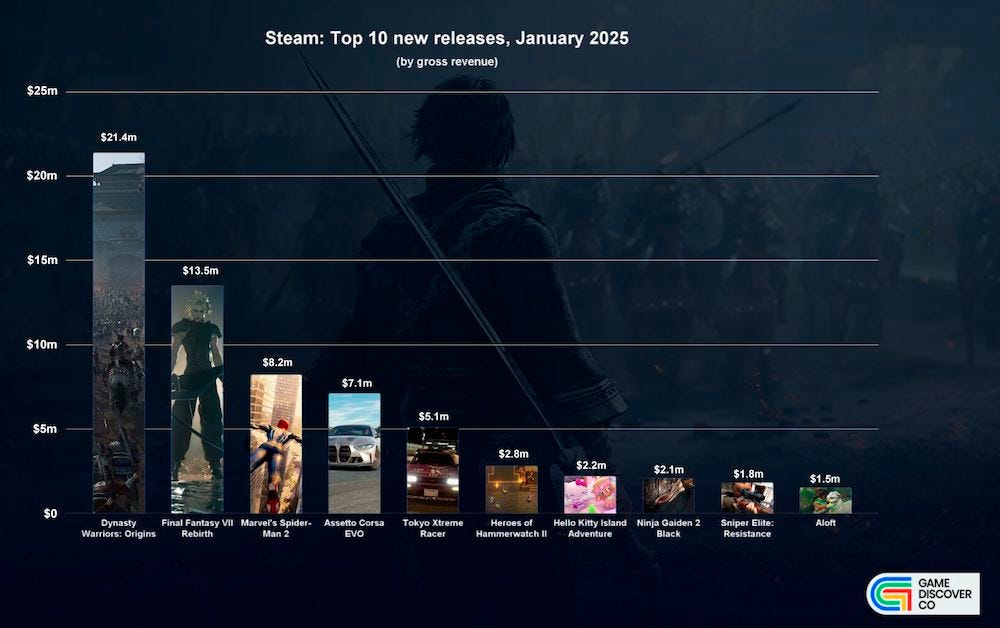

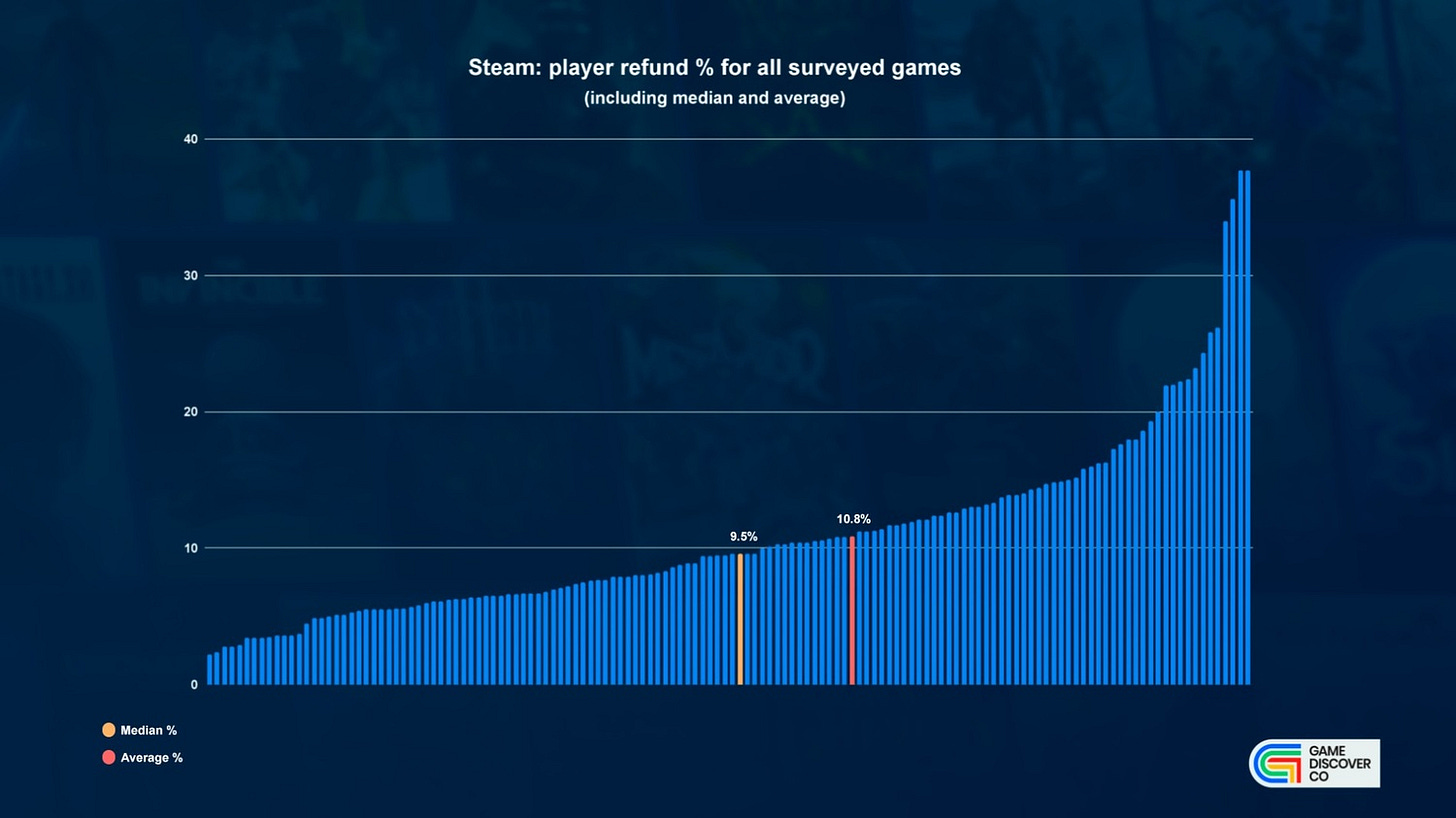
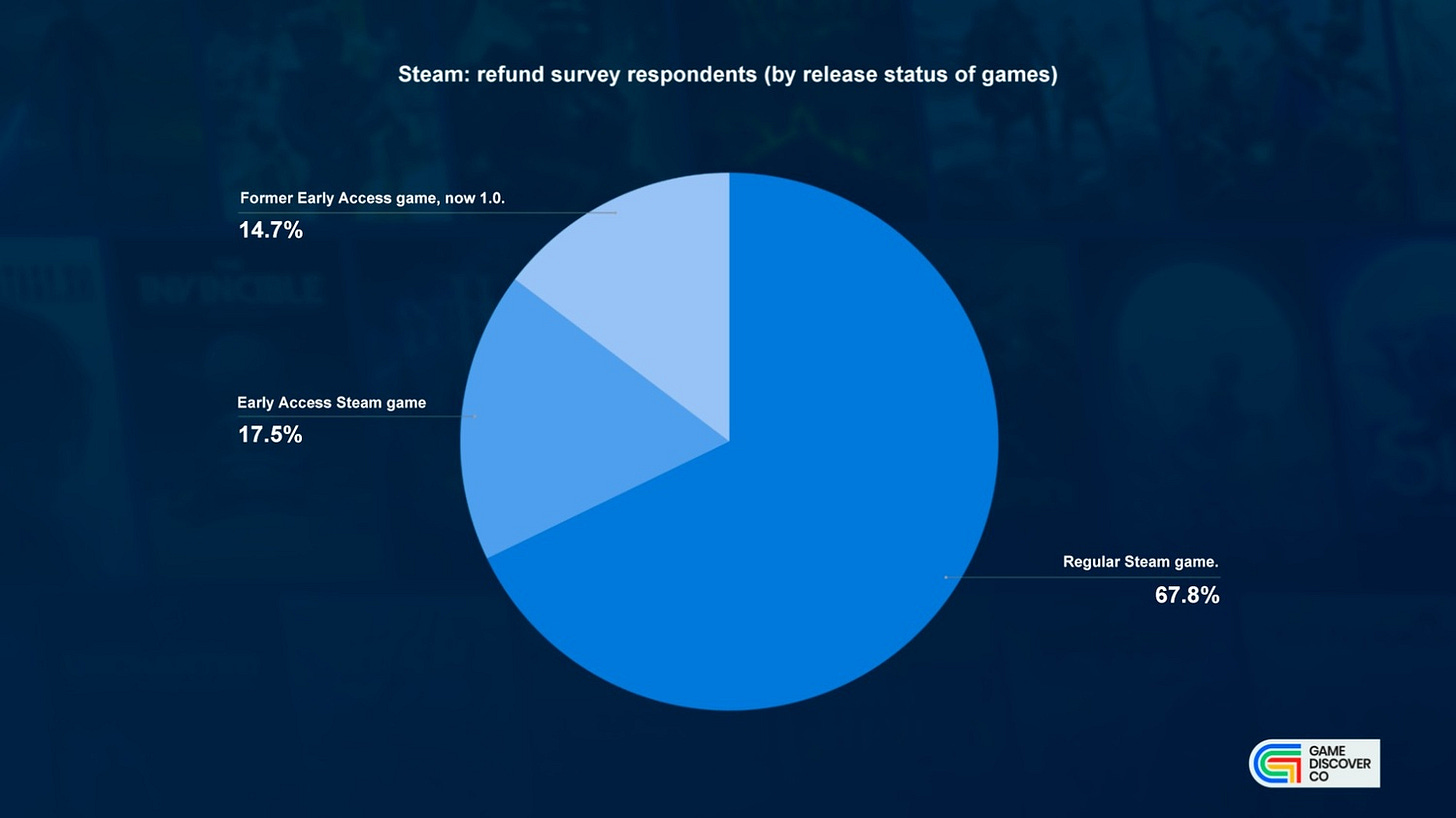
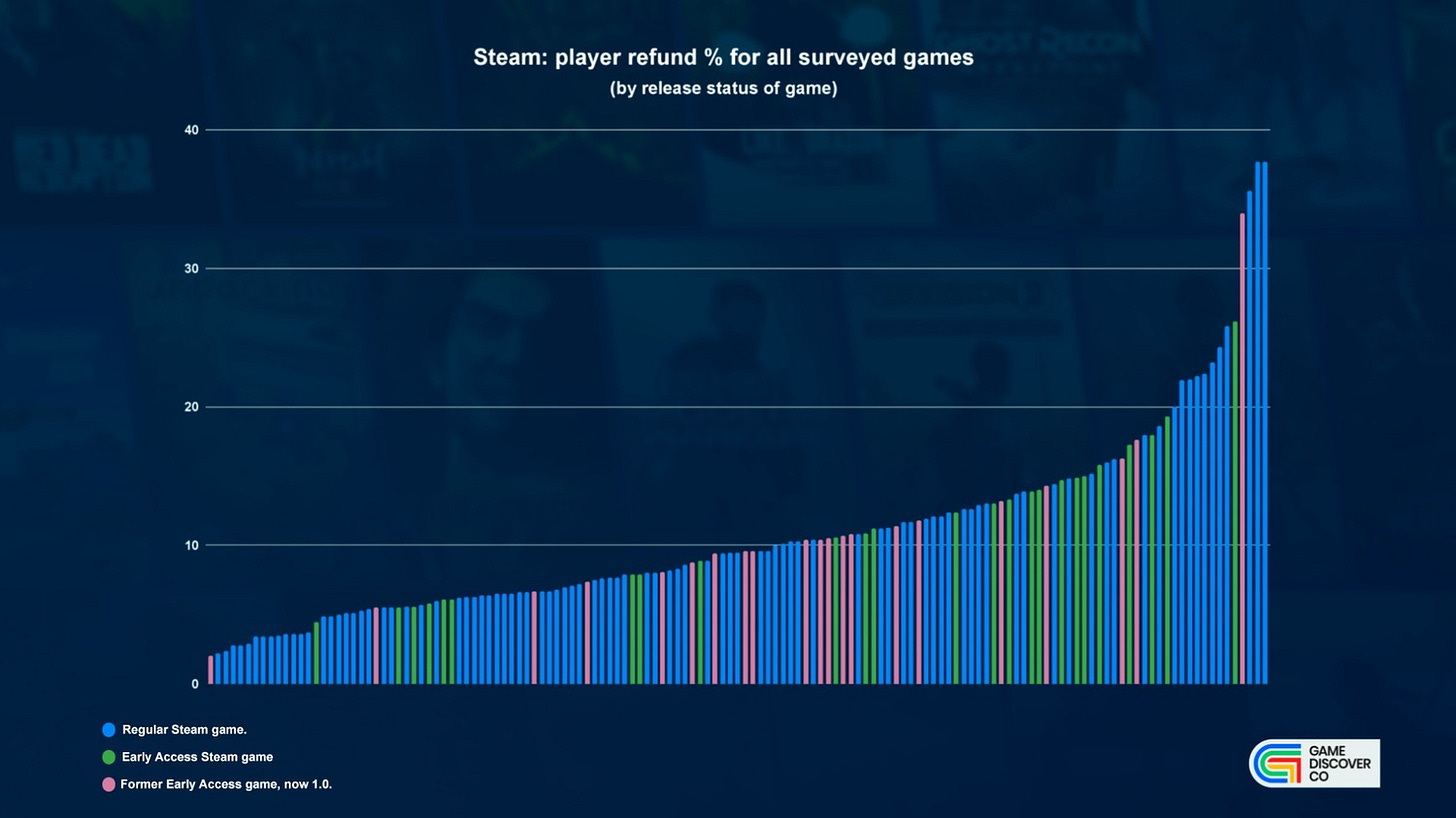
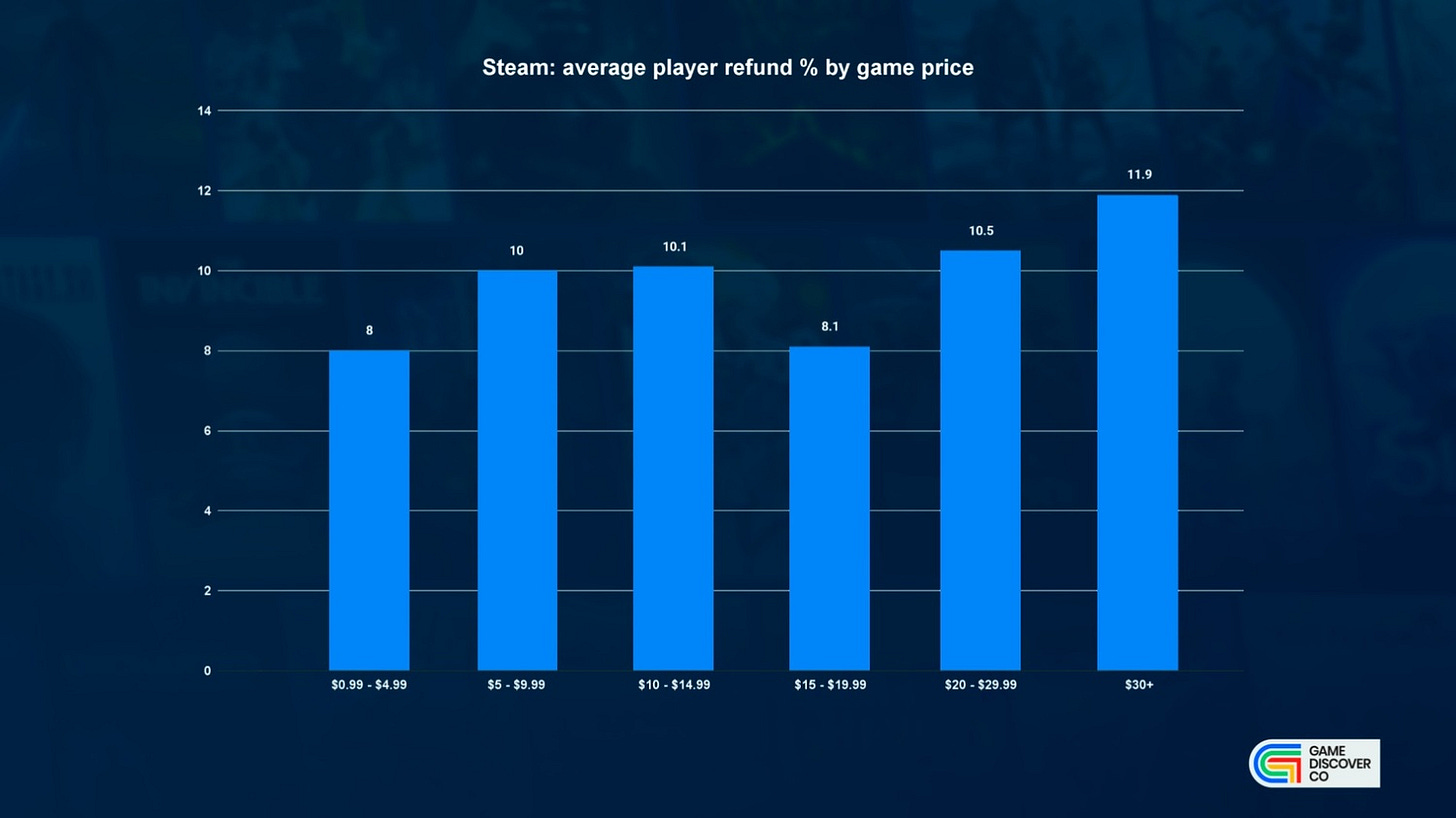
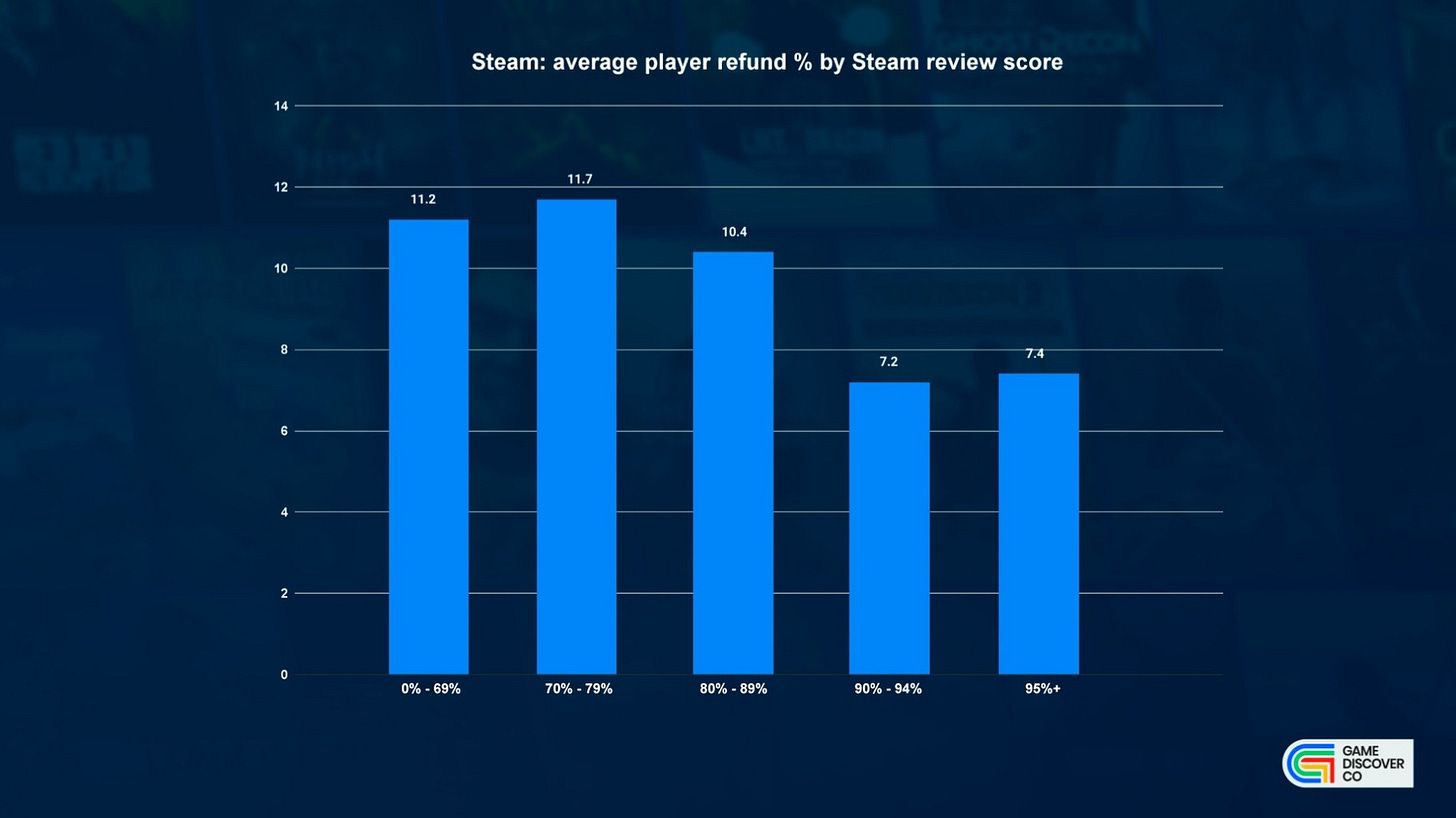
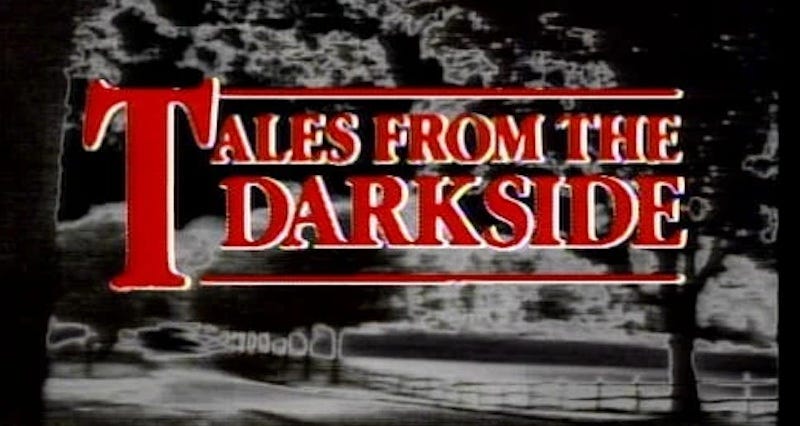
Thank you very much for mentioning me. Appreciated.
Thanks Simon for the detailed analysis, as always!
It's good to know, but I guess for me as I'm early in the process, my mind is still very fixated on making a good game, building an audience. If that cycle reaches enough critical mass, maybe I would be much more concerned with reducing this number down by problem solving.